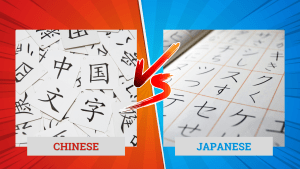Imagine having to memorize 50,000 characters, decode nine different tones, or master 17 grammatical cases—welcome to the world’s linguistic Everest. While many agree that Mandarin Chinese is the most challenging language for English speakers, languages like Arabic, Japanese, Hungarian, and Vietnamese push learners to their limits in unique ways. In this comprehensive guide, we’ll explore the top 10 hardest languages for English speakers in 2025, explain what makes them difficult, and offer actionable strategies to conquer these linguistic challenges.
What Makes a Language Difficult? Key Factors Explained
Before diving into our list, it’s important to understand the factors that can make a language difficult to learn. These factors include:
Phonetic Complexity:
- Tonal Systems: Languages like Mandarin and Vietnamese use tones to change the meaning of words. For example, the syllable “ma” in Mandarin can mean “mother,” “horse,” or “scold,” depending on the tone.
- Unfamiliar Sounds: Languages such as Arabic and Navajo include sounds—like pharyngeal consonants or glottalized stops—that require retraining your vocal muscles.
Grammatical Barriers:
- Case Systems and Agglutination: Languages like Hungarian and Finnish use a high number of grammatical cases (up to 18 in Hungarian and 15 in Finnish) and rely on agglutination, meaning words are formed by stringing together many suffixes.
- Verb Aspects and Conjugations: Russian, for example, uses perfective and imperfective aspects, which require learning paired verb forms.
Orthographic Challenges:
- Non-Alphabetic Scripts: Japanese and Mandarin use logographic systems (Kanji and Hanzi) that demand memorization of thousands of unique characters.
- Complex Writing Directions: Arabic is written right-to-left, and its letters change shape depending on their position in a word.
Top 10 Most Difficult Languages in the World
1. Mandarin Chinese
Key Challenges:
- Tonal System: Four tones (flat, rising, falling-rising, falling) redefine meanings. Example:
- mā (妈) = mother | má (麻) = numb | mǎ (马) = horse | mà (骂) = scold
- Logographic Writing: Over 50,000 characters exist, but 3,500 are needed for basic literacy. Characters combine radicals (meaning) and phonetics (sound).
- Grammar Simplicity?: No verb conjugations, but measure words (e.g., 一杯水 = “a glass of water”) and context-heavy sentences add layers.
Cultural Tip: Business success in China often hinges on mastering Chengyu (四字成语), four-character idioms steeped in history.
Also Read: 10 Ways to Learn Chinese Fast and Effectively
2. Arabic
Key Challenges:
- Diglossia: Modern Standard Arabic (formal) vs. 30+ regional dialects (e.g., Egyptian, Gulf) differ like Latin vs. Italian.
- Script Complexity: 28 letters change shape based on position (ـمـ vs. ـم). “Sun” and “Moon” letters alter pronunciation (e.g., الشمس vs. القمر).
- Grammar: Dual number system, root-based morphology (ك-ت-ب for “writing”), and guttural sounds like ع (ʕayn).
Pro Tip: Focus on Egyptian Arabic first—it’s widely understood in media and has simpler grammar.
3. Japanese
Key Challenges:
- Writing Trio:
- Kanji: 2,136常用漢字 (Jōyō Kanji) with multiple readings (e.g., 生 = sei or nama).
- Hiragana: For native words (e.g., たべます = “to eat”).
- Katakana: For foreign terms (e.g., コーヒー = “coffee”).
- Honorifics: 尊敬語 (respectful) vs. 謙譲語 (humble) alter verbs (e.g., 言う → おっしゃる).
Cultural Insight: Misusing honorifics can offend, especially in workplace hierarchies.
4. Korean
Key Challenges:
- Speech Levels:
- 합쇼체 (Formal): For elders/strangers.
- 해요체 (Polite): Common in daily life.
- 반말 (Casual): For close friends.
- Hanja Roots: 70% of academic terms derive from Chinese characters (e.g., 학 學 = “study”).
Grammar Hack: Master -습니다/-ㅂ니다 endings early for polite interactions.
5. Hungarian
Key Challenges:
- Suffix Stacking: Házaimban = “in my houses” (ház + ai + m + ban).
- 18 Grammatical Cases: Locative cases like -ból/-ből (out of) vs. -nál/-nél (at).
- Idioms: Over 200 horse-related phrases (e.g., Lóvá tesz = “Drive someone mad”).
Learning Shortcut: Prioritize vowel harmony rules to avoid mismatched suffixes.
6. Finnish
Key Challenges:
- 15 Noun Cases: Partitive case distinguishes syön kalan (“I eat the fish”) vs. syön kalaa (“I eat some fish”).
- Consonant Gradation: Auto → Auton (“car” → “car’s”).
Fun Fact: Finnish lacks future tense—context or time markers (e.g., huomenna = “tomorrow”) clarify meaning.
7. Polish
Key Challenges:
- Pronunciation: Szczęście (“happiness”) = sh-ch-ayn-sh-ch-e.
- 7 Genders: Masculine personal vs. non-personal nouns affect adjective endings (e.g., duży chłopiec vs. duże krzesło).
Pro Tip: Learn mnemonics for tricky words (e.g., żółć = “bile” sounds like “jolt”).
8. Icelandic
Key Challenges:
- Archaic Grammar: Four cases, gendered plurals (e.g., bók → bækur for “books”).
- Native Compounds: Rafmagn (“electricity”) = raf (amber) + magn (power).
Cultural Note: Icelanders fiercely preserve linguistic purity—less than 2% of words are loanwords.
9. Turkish
Key Challenges:
- Agglutination: Çekoslovakyalılaştıramadıklarımızdanmışsınızcasına = “As if you were one we couldn’t Czechoslovakize.”
- Vowel Harmony: Front vowels (e, i) and back vowels (a, o) dictate suffixes (e.g., evler = “houses” vs. odalar = “rooms”).
Grammar Hack: Start with -dir for uncertainty (e.g., Yağmur yağıyor. vs. Yağmur yağıyordur.).
10. Vietnamese
Key Challenges:
- 6 Tones: Ma can mean “ghost” (ma), “mother” (má), or “tomb” (mả).
- Diacritics: à, á, ả, ã, and ạ alter pitch and meaning.
Pro Tip: Use Northern accents for formal settings and Southern accents for casual speech.
FSI Language Difficulty Rankings (2025 Update)
The Foreign Service Institute (FSI) provides estimated study times for English speakers to reach “General Professional Proficiency.” Here’s a brief overview of their categories:
| Category | Duration | Language |
| Category I | 24-30 weeks (600-750 hours) | Afrikaans, Danish, Dutch, French, Italian, Norwegian, Portuguese, Romanian, Spanish, Swedish |
| Category II | 30 weeks (750 hours) | German |
| Category III | 36 weeks (900 hours) | Indonesian, Malaysian, Swahili |
| Category IV | 44 weeks (1100 hours) | Albanian, Amharic, Armenian, Azerbaijani, Bengali, Bosnian, Bulgarian, Burmese, Croatian, Czech, Estonian, Finnish, Georgian, Greek, Hebrew, Hindi, Icelandic, Khmer, Lao, Latvian, Lithuanian, Macedonian, Mongolian, Nepali, Pashto, Persian, Polish, Russian, Serbian Sinhala, Slovak, Slovenian, Taqaloq, Thai, Turkish, Ukrainian, Urdu, Uzbek, Vietnamese, Xhosa, Zulu |
| Category V | 88 weeks (2200 hours) | Arabic, Cantonese (Chinese), Madarin (Chinese), Japanese, Korean |
Actionable Strategies to Conquer Difficult Languages
No matter how daunting a language may seem, these strategies can help you make steady progress:
1. Immersive Practice:
Engage with native speakers via language exchange platforms, watch movies, listen to music, and read in the target language.
2. Consistent Study:
Dedicate daily or weekly sessions focusing on all aspects—reading, writing, listening, and speaking.
3. Use Technology:
Leverage language apps (e.g., Duolingo, Anki, Tandem) and online courses to reinforce your learning.
4. Cultural Exposure:
Learn about the culture, idioms, and customs associated with the language to enhance contextual understanding.
5. Professional Guidance:
Consider enrolling in classes or hiring a tutor, especially for languages with complex grammar or unfamiliar scripts.
Partner with EC Innovations to Overcome Language Barriers
Is your business struggling with language and cultural barriers while trying to expand globally? At EC Innovations, we empower businesses with expert translation and localization services in 250+ language pairs—including all challenging languages such as Arabic, Mandarin, and Korean—ensuring that your brand speaks with clarity and cultural relevance wherever you do business.
Talk to our experts today and discover how our comprehensive translation and localization services can help you succeed globally.





